For years, people have been using flowers to send a message. Sometimes they can mean that you’re simply thinking of someone. Other times it can be a grand gesture of love. Did you know there are flowers that represent protection too?
These are great blooms to give your child embarking into adulthood, a friend who just gave birth, or a loved one experiencing great loss. Let’s take a look at which flowers represent protection to help guide you along the way.
1. Snapdragon
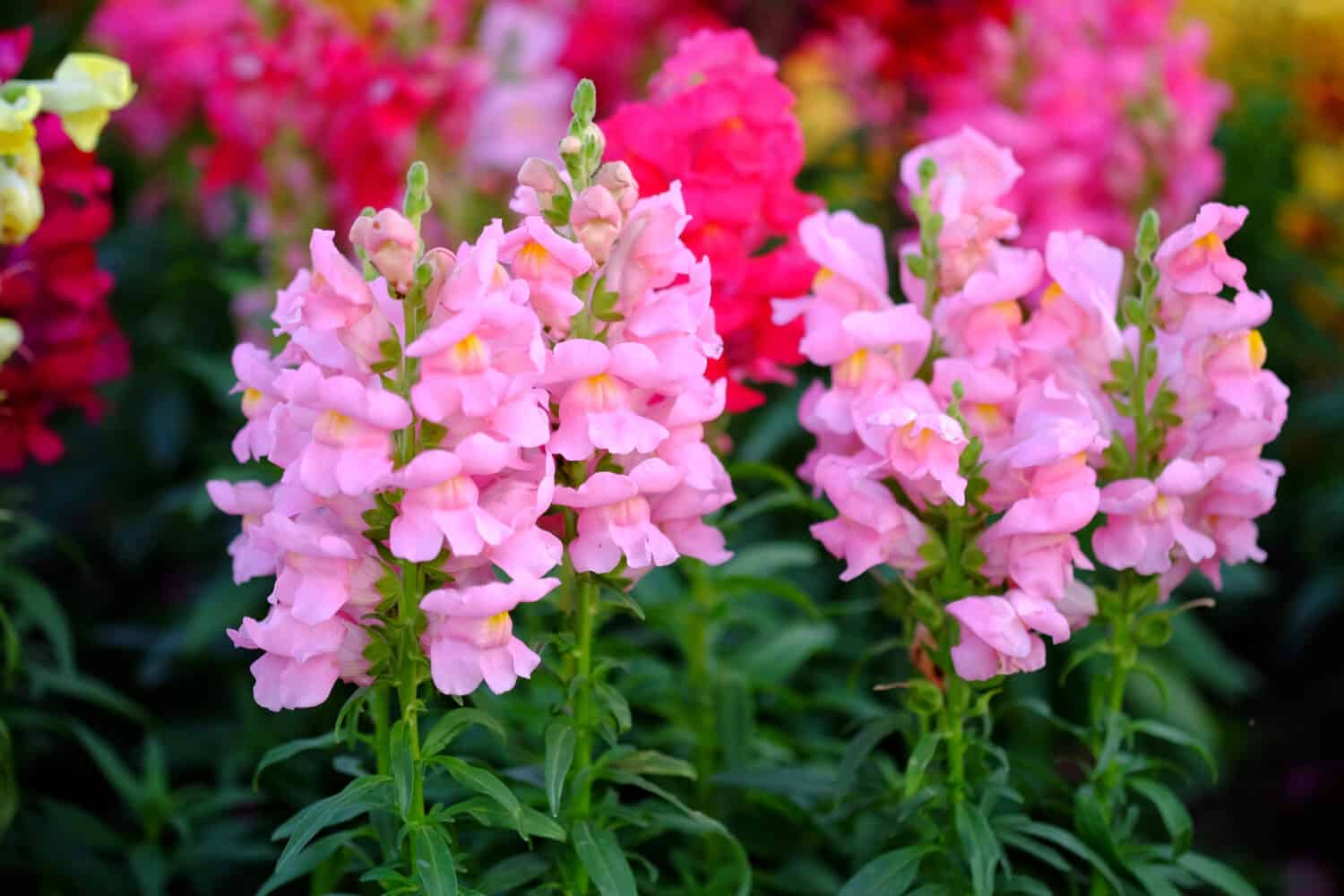
Snapdragons can survive light frost.
©Nualanong/Shutterstock.com
Starting us off is the snapdragon. This is a popular flower that people buy and grow for its stunning appearance. It grows in the wild throughout Africa, Western Asia, as well as Europe. They get their name because when fully bloomed snapdragons look like mythical creatures donning several pairs of lips!
In addition to protection, grace, and strength are other representations of this bloom.
2. Mullein
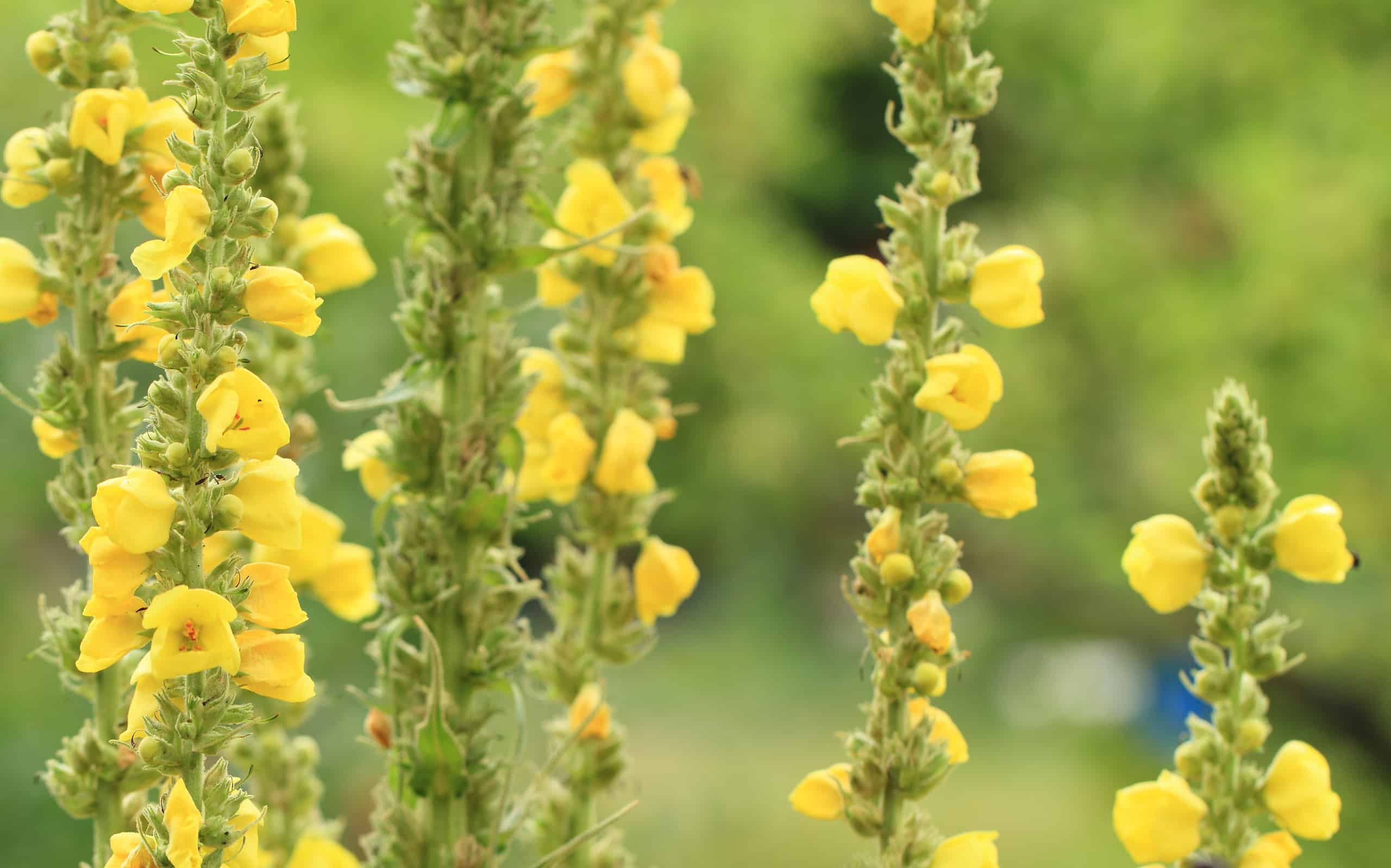
This flower is known for its medicinal uses.
©jonnysek/iStock via Getty Images
Next, mullein flowers have a stunning center that instantly grabs your attention. They are native to parts of Asia and Europe. These perennials are popular due to their unique petals and towering height.
These flowers typically bloom in various shades of yellow. Not only do they represent protection, but Mullein is a symbol of great health and courage.
3. Baptisia
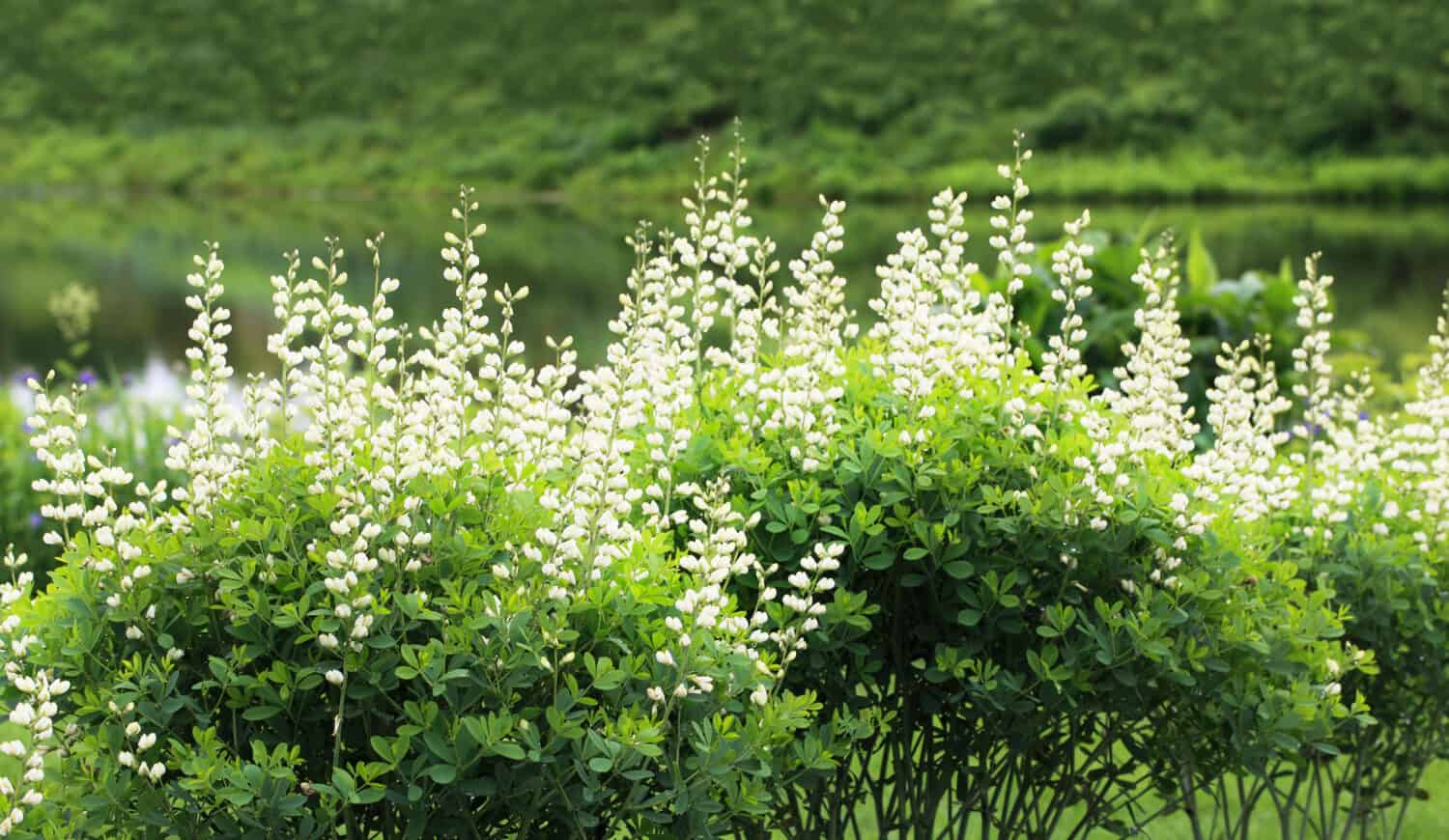
Another name for this flower is the false indigo flower.
©Le Do/Shutterstock.com
The Greek word “bapto” loosely translates to “immerse.” The Baptisia bloom is a symbol of immersing yourself in protection and being safe from any potential harm. There are over 20 species within its family and you can find them throughout the United States.
4. Yarrow
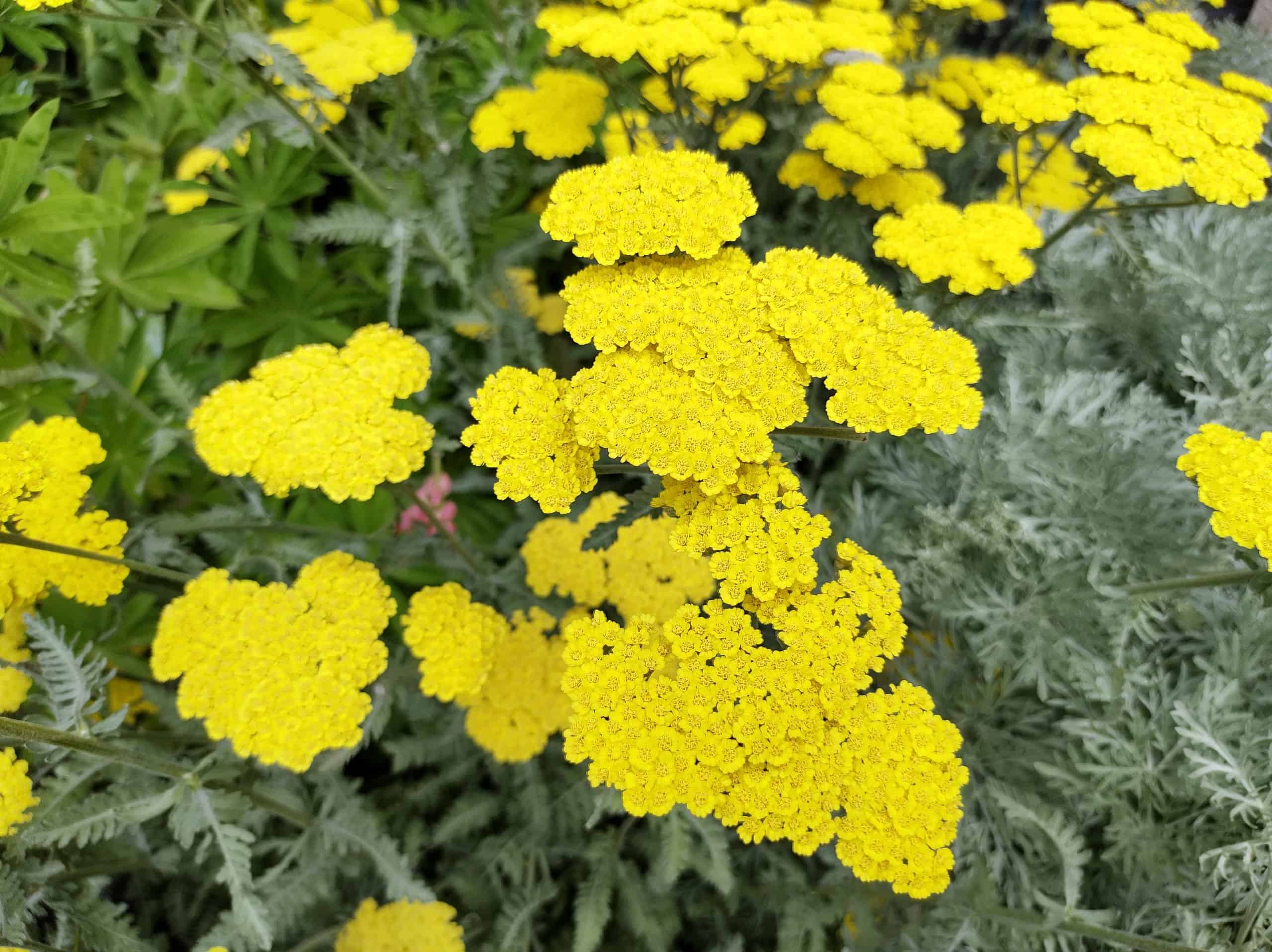
Yarrow typically grows to be yellow, white, or red.
©iStock.com/John Caley
There are over 100 species of Asteraceae and yarrow is one that represents protection. If you like ferns, yarrow may be a flower you want around. It has colorful petals and beautiful green foliage.
The petals are quite small and clustered together, making them a great addition to flower beds. The history behind this flower references soldiers in the Trojan War. Greek mythology states that wounded soldiers were treated with these flowers.
Yarrow also represents healing, good luck, success, and protection.
5. Witch Hazel
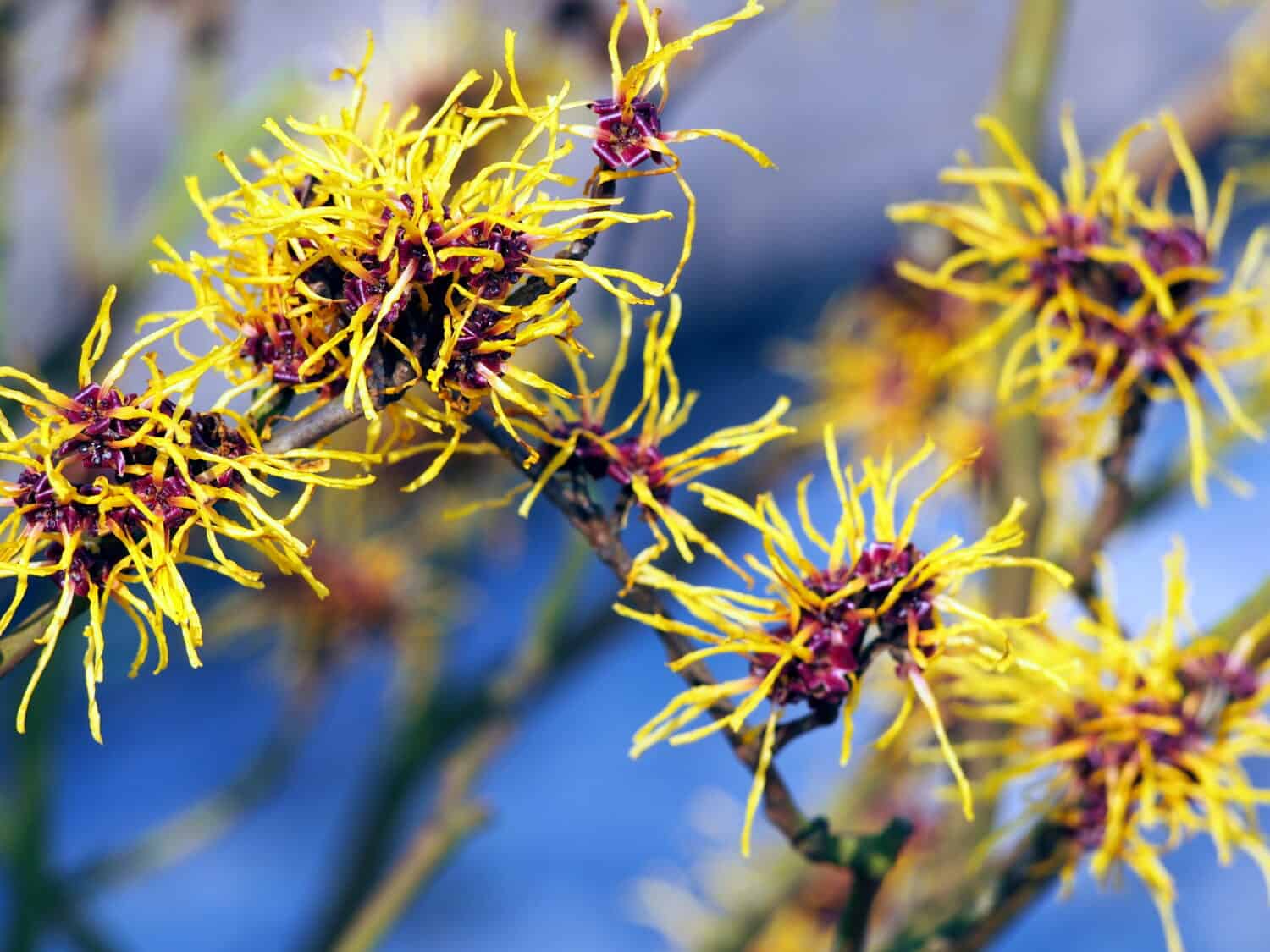
This is one of the most commonly used flowers in skincare.
©Anna Gratys/Shutterstock.com
Next is a flower we commonly know as witch hazel. Not only does it represent protection, but this flower is popular when it comes to treating injuries and helping with skin care. Witch hazel is native to Eastern Asia and North America.
In terms of appearance, these blooms appear in spindly clusters. It typically blooms from autumn to spring.
6. Tansy
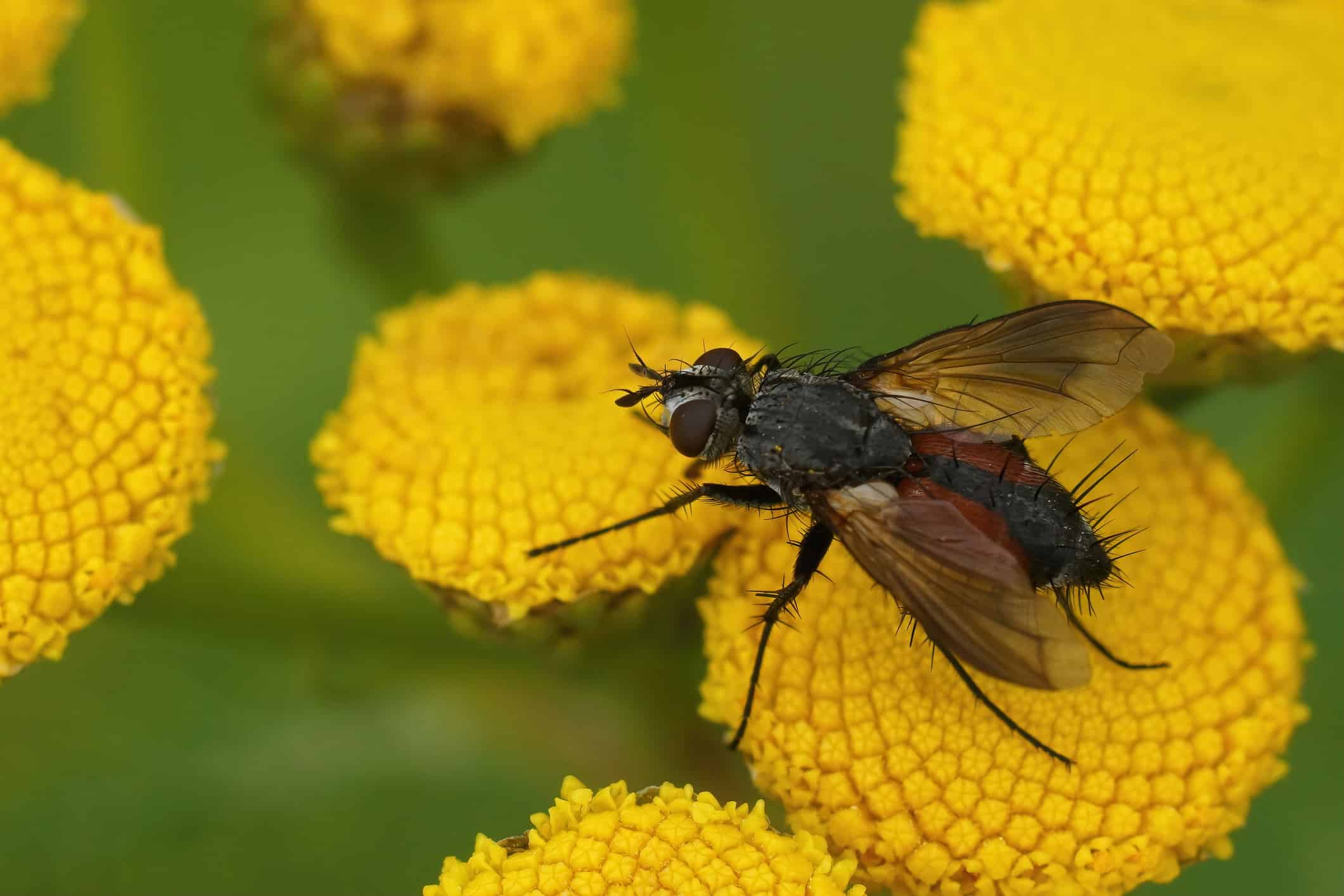
Insects love to rest and snack on tansies.
©iStock.com/Wirestock
A beautiful flower that looks similar to a daisy and represents protection is a tansy. These blooms have a button-like appearance and are quite dense. They come as annuals and perennials, making them a great choice for everyone.
Some people believe this flower symbolizes health, immortality, resilience, and healing.
7. St. John’s Wort

Please talk with your doctor before using St. John’s wort if you’re currently taking other medication.
©VH-studio/Shutterstock.com
St. John’s wort is a popular flower that is famous for its healing properties. Believe it or not, many believe this bloom helps with everything from bruises to major depressive disorder.
In terms of protection, historically this flower is burned on June 23 just before the Midsommar festivities. This is done to protect those who burn it from evil entities. Others believe this flower can also offer protection to those who grow it.
8. Astrantia

Another name for this flower is melancholy gentleman.
©JohnatAPW/Shutterstock.com
It’s hard to beat the unique beauty that Astrantia brings to the table. It is a vibrant bloom that has a cluster of bracts that practically reach toward you. This flower is often available in purple, red, pink, and white.
Historically, this beautiful star-like bloom has been considered a flower from God. It represents protection, courage, and strength.
9. Heath
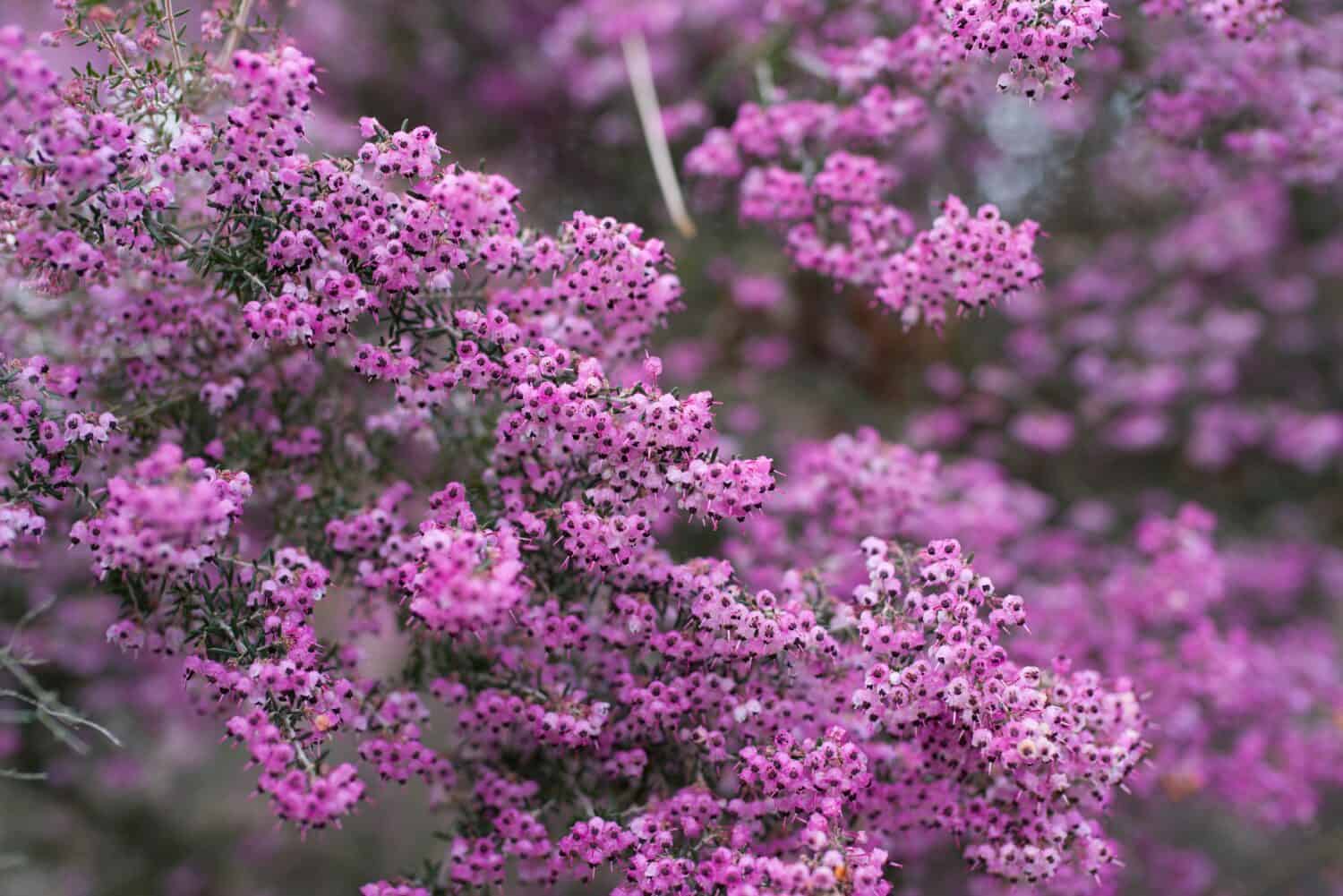
This flower continues to be part of western medicine.
©zzz555zzz/Shutterstock.com
Heath is a part of the Ericaeae family, along with over 800 other species. It is native to Africa and grows wild in South Africa. Although it’s a shrub, it has bell-like petals that hang down. Health comes in bright pink, green, and cream.
This flower has been used to help people with kidney stones in addition to being a symbol of protection and good luck.
10. Anemone
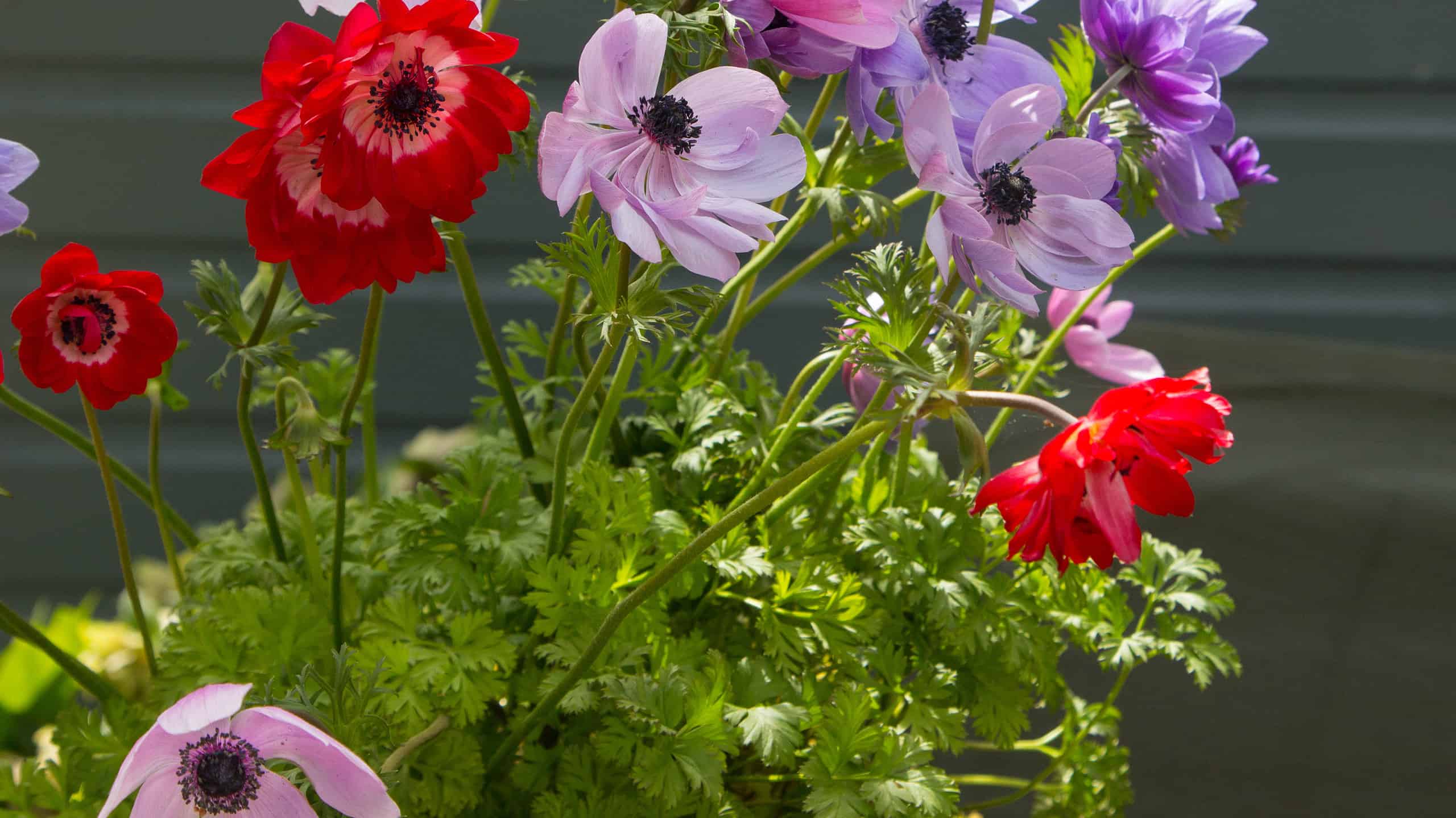
Anemone can look very different, depending on the species.
©Jeanie333/Shutterstock.com
When you hear the term “wildflower,” it generally refers to the Anemone flower. You can find these stunning blooms all over North America, Japan, and throughout Europe. There are five petals and three leaflets on anemones.
It represents protection, luck, and rebirth.
11. Malva
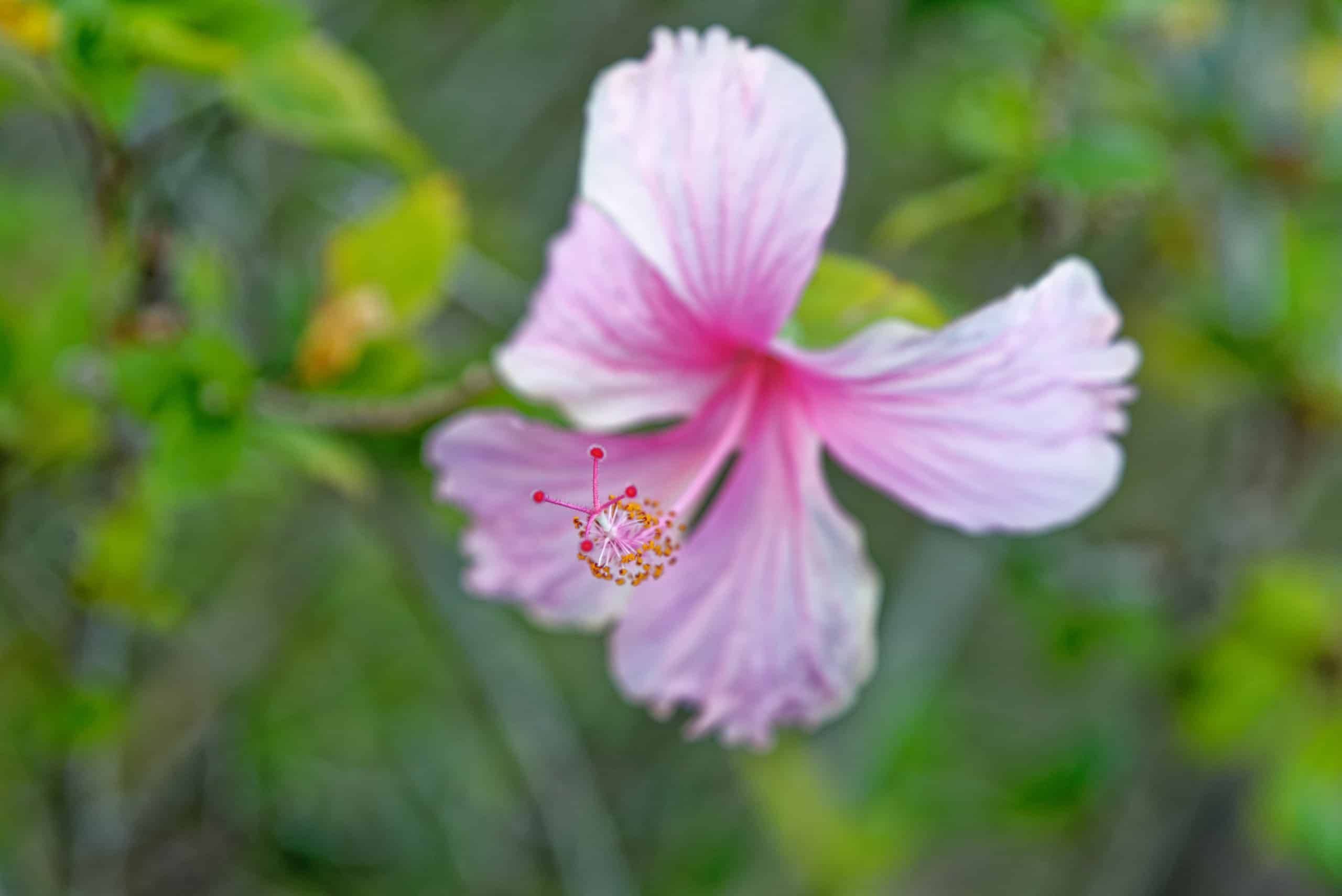
This flower will attract bees and hummingbirds.
©iStock.com/ad_foto
Malva is a large flower that sometimes goes by the name mallow. It grows in certain areas of Asia, Europe, and Northern Africa. These blooms grow in a variety of colors, including hot pink, violet, and white.
People use these blooms in their homes as a form of protection. It also symbolizes health in some cultures.
12. Acacia
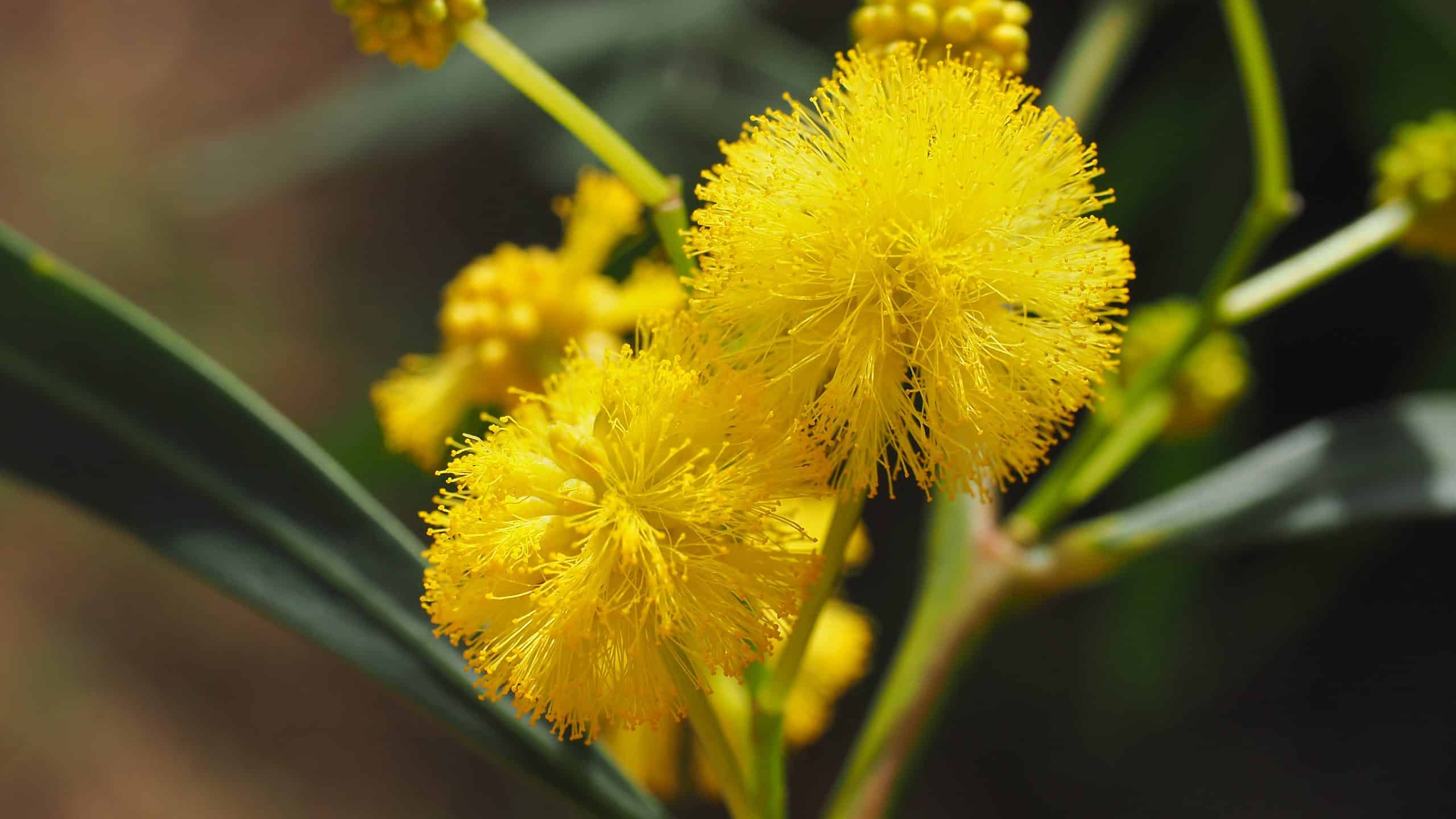
Another name for these is golden wattle.
©Life Collection Photography/Shutterstock.com
The stunning flowering acacia tree represents innocence, protection, and eternal life. It seems sense that this tree’s physical qualities and symbolic significance have made it beloved in a number of cultures throughout history.
Acacia trees were revered in ancient Egypt and were thought to offer security in the afterlife. In the past, you could expect people to use the sap for embalming. The wood of this tree is commonly one caskets are made from. It offers a physical defense against danger with its thorns and sharp foliage, and it exudes tranquility and purity with its lovely blossoms.
Acacia is useful for defense due to its numerous physical qualities as well as its symbolic significance.
13. Aloe Vera

This plant can protect you from harmful sunburns.
©areeya_ann/Shutterstock.com
Aloe may not be a flower, but it’s a plant worth mentioning. Succulent plants like aloe vera represent healing, assurance, and cleansing. It is a well-liked natural treatment for a variety of illnesses because of the clear gel that is packed with healing compounds inside its meaty leaves.
Aloe vera was a medicinal plant utilized by Egyptians in antiquity to treat and nourish the body. This plant represents protection in all aspects. Aloe vera has been employed for its therapeutic and defensive qualities by several cultures.
14. Angelica

Angelica can be utilized to fill bouquets.
©alpictures/Shutterstock.com
For generations, angelica has been associated with health, cleanliness, and protection. Its distinctive qualities make it a well-liked natural cure for a variety of diseases, and its tall stems and white blossoms present a lovely look.
People in the Middle Ages thought that angelica offered protection from various ailments, including the plague. Apart from its defensive qualities, angelica is a widely used herb in cooking. Its stems and leaves are frequently used in teas, spirits, and sweets.
Summertime brings forth the plant’s exquisite white blossoms, which stand for purity and youth. The blooms are a wonderful addition to any yard since they draw insects that are helpful.
15. Ash

The flowers of an ash tree can feel prickly to the touch.
©Marina Denisenko/iStock via Getty Images
Ash is a beautifully flowering tree that represents protection. According to Norse mythology, the ash tree’s blooms served as a bridge between the worlds of the gods and humanity, acting as the central point of the cosmos.
They also thought it was a potent representation of restoration and safety. There is a history of people using the compounds from the tree’s bark and leaves for millennia in traditional medicine. The ash tree also represents strength and protection in current times.
Its blossoms are frequently part of celebrations and rituals by people to fend off bad energy and promote tranquility. The wood of the tree is still utilized for building and furniture since it is robust and long-lasting.
16. Aster

These flowers can come in a wide variety of bright colors.
©KarenHBlack/iStock via Getty Images
Aster flowers are a lovely and significant symbol of affection and protection that often appear in parks and bouquets because of their vivid, star-shaped petals. Aster blossoms were once thought to be a potent emblem of protection from evil spirits and bad energy.
They frequently employed them in rites and ceremonies to fend off danger and instill tranquility. Aster blooms are common for weddings and other celebrations, and they are also linked to love and romance.
They are frequently presented as gifts to convey romantic or platonic affection. Because of its antibacterial and anti-inflammatory qualities, aster flowers are a useful remedy for a number of ailments, including toothaches and migraines.
17. Calendula
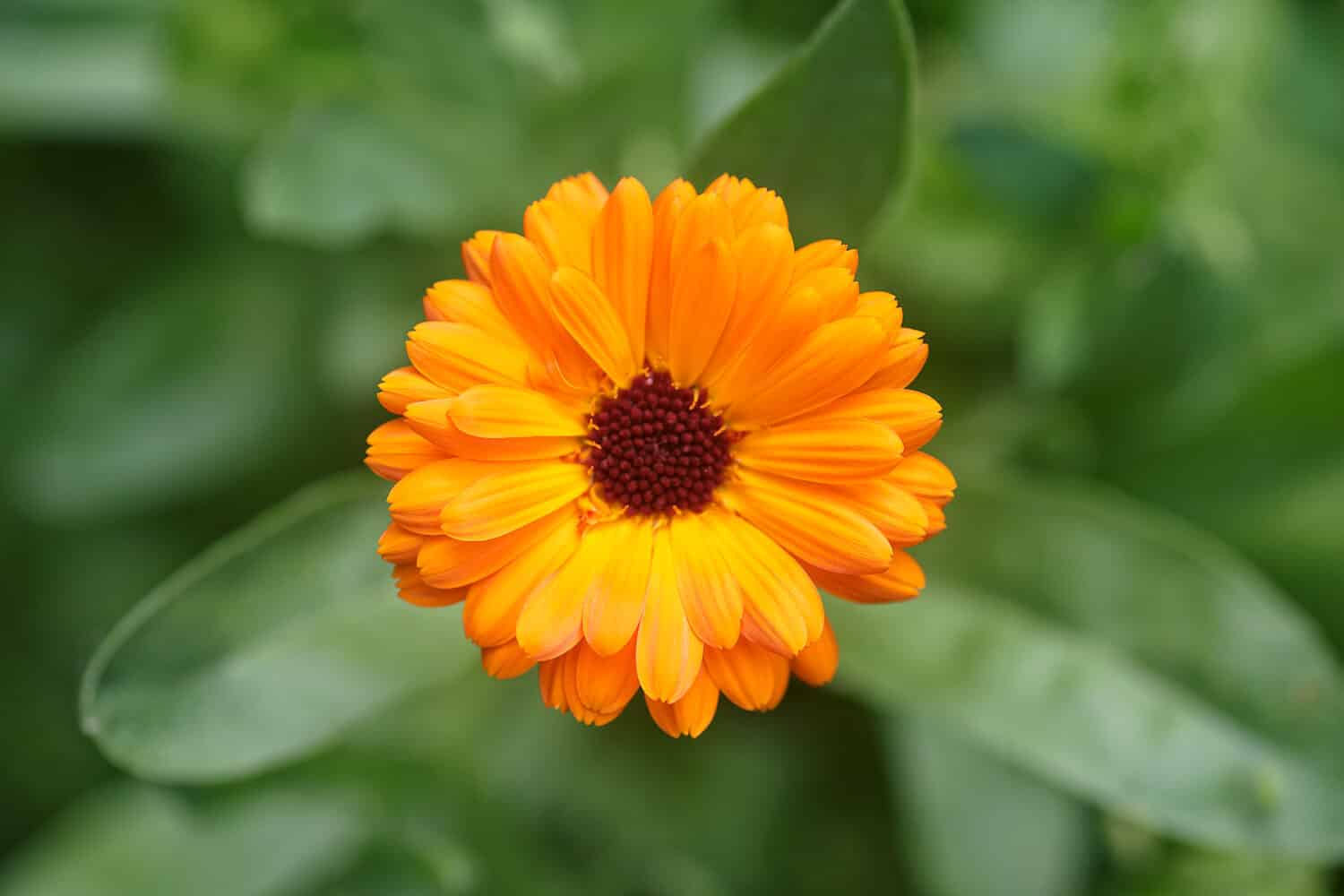
These are a popular summer bloom to plant in gardens.
©domnitsky/Shutterstock.com
A bright orange and yellow flower that represents recovery and protection is calendula. It is well-known for its many psychological and physiological advantages and has a lengthy history of usage in medical practices.
Its vibrant hues and soft petals provide security and defense, and its constituents have been used to treat a range of illnesses, from stomach troubles to allergic reactions. With its distinctive shape and vivid colors, calendula is additionally an attractive feature in landscapes and centerpieces.
18. Carnation
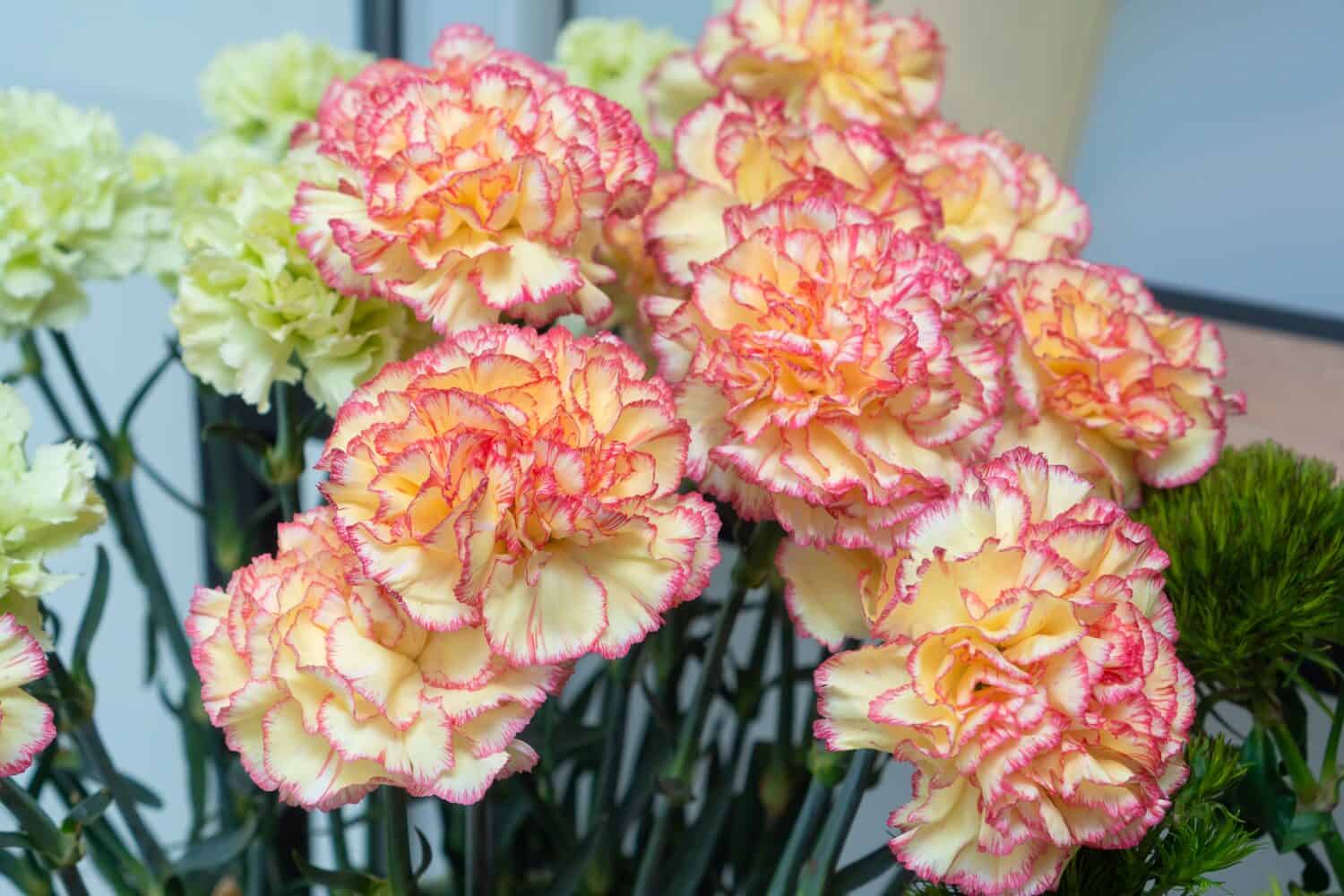
Most bouquets for healing will include carnations.
©ERIK Miheyeu/Shutterstock.com
Carnations are one of the most popular flowers in the United States. They are lovely and significant representations of love and protection that have deep cultural importance in many societies. They come in a variety of colors, including yellow, pink, and white.
Carnations are the perfect flower to give out if you are trying to express your feelings because they represent longing, passion, and platonic affection. Carnations have long been used in magic and protection, and they have a wide range of ancient magical properties.
19. Chrysanthemum

These flowers are so popular because of the wide variety of colors they come in.
©Volodymyr Yakovyna/Shutterstock.com
Chrysanthemums come in a range of colors from vivid yellow to rich burgundy. These blooms are symbolic of vitality and protection. Chrysanthemums are connected with safety and good fortune in various cultures.
These flowers are recognized for their anti-inflammatory qualities, which enable them to effectively treat a range of medical conditions, from migraines to skin itchiness. Because of their striking shapes and vibrant colors, chrysanthemums have become an appealing option for home décor.
They are visually striking and calming flowers.
20. Cinquefoil
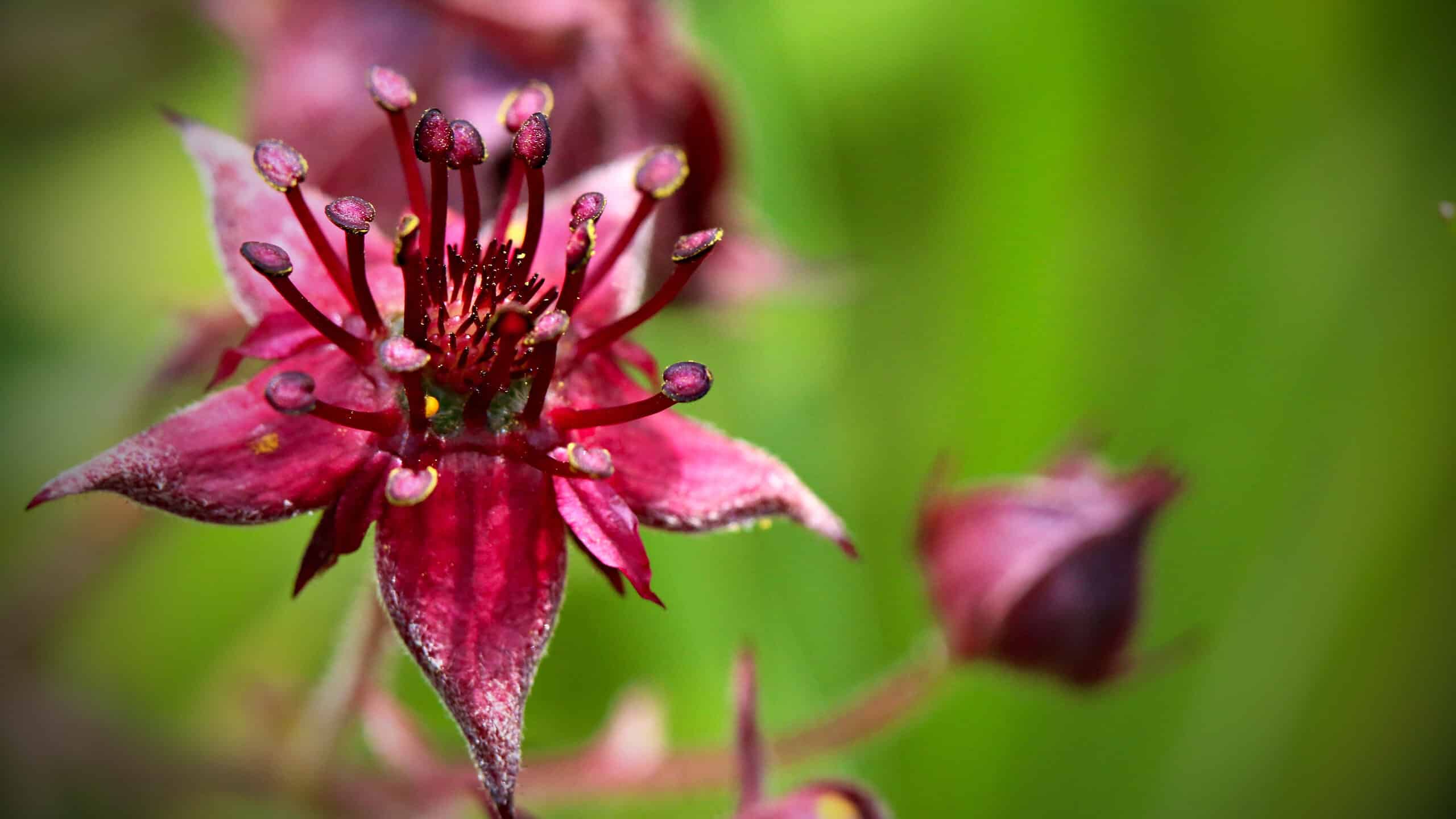
There are over 300 species of cinquefoil.
©Jitka Sterbova/Shutterstock.com
With its fragile, hand-shaped petals, cinquefoil flowers represent protection and good fortune. Because they were thought to be a shield against evil, they have been used for centuries in mythology and medical traditions.
Cinquefoil flowers have therapeutic qualities that can be used to treat a variety of illnesses, including anemia and epilepsy. In addition to their significance to culture, cinquefoil flowers are a popular option for nurseries and bouquets because of their pleasant scent and attractive appearance.
21. Comfrey
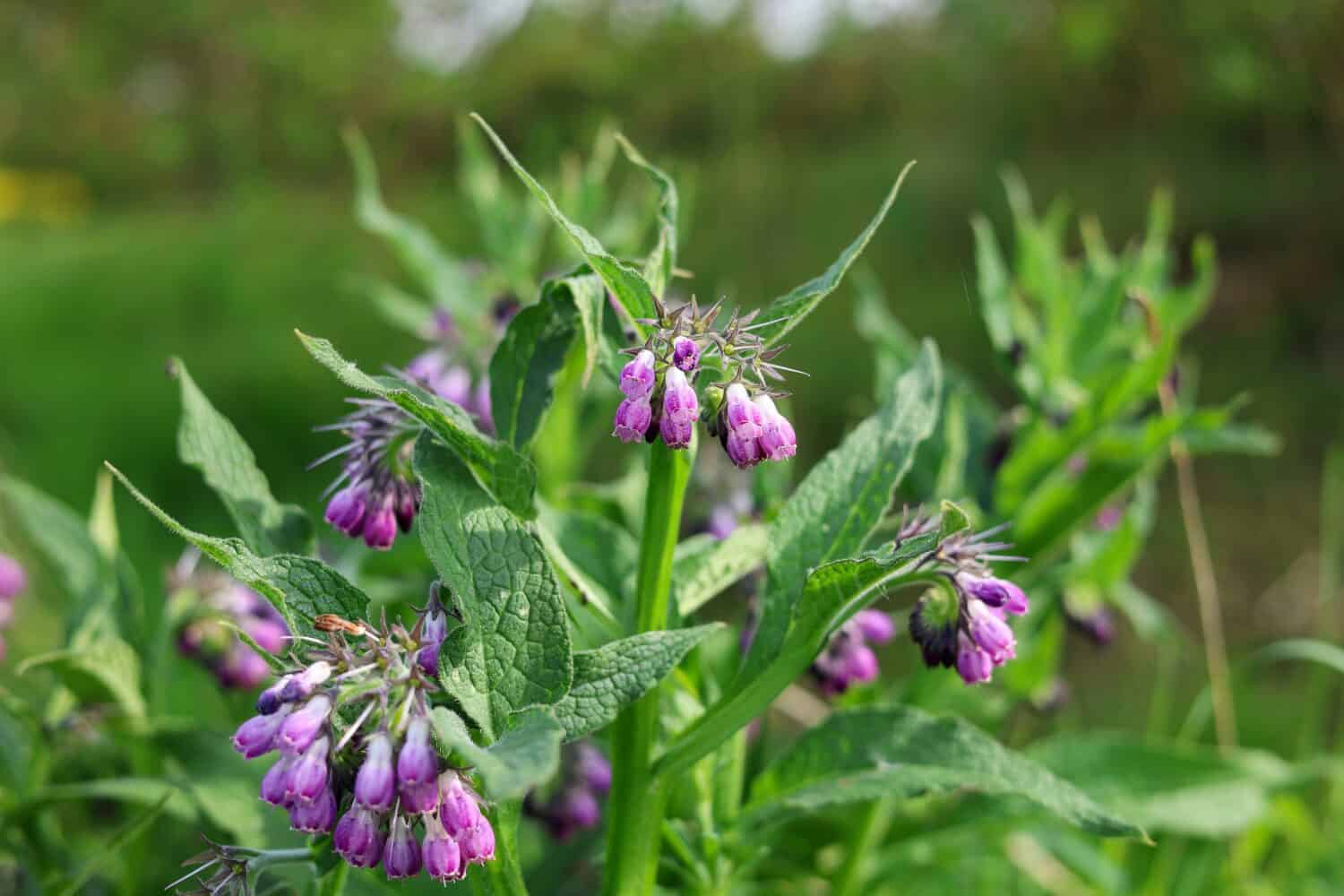
You can grow these flowers alongside riverbanks.
©MaCross-Photography/Shutterstock.com
Another flower that represents protection is the comfrey flower. These are a lovely and significant representation of healing as well. Comfrey blooms in gorgeous pink, purple, and white blooms shades. People plant these flowers in gardens in addition to using them for herbal remedies.
There is also a long history of conventional medical treatment using comfrey flowers. They have become famous for their capacity to encourage cell regeneration and recovery. In the olden days, comfrey flowers were utilized to help those with burn wounds.
22. Daffodil
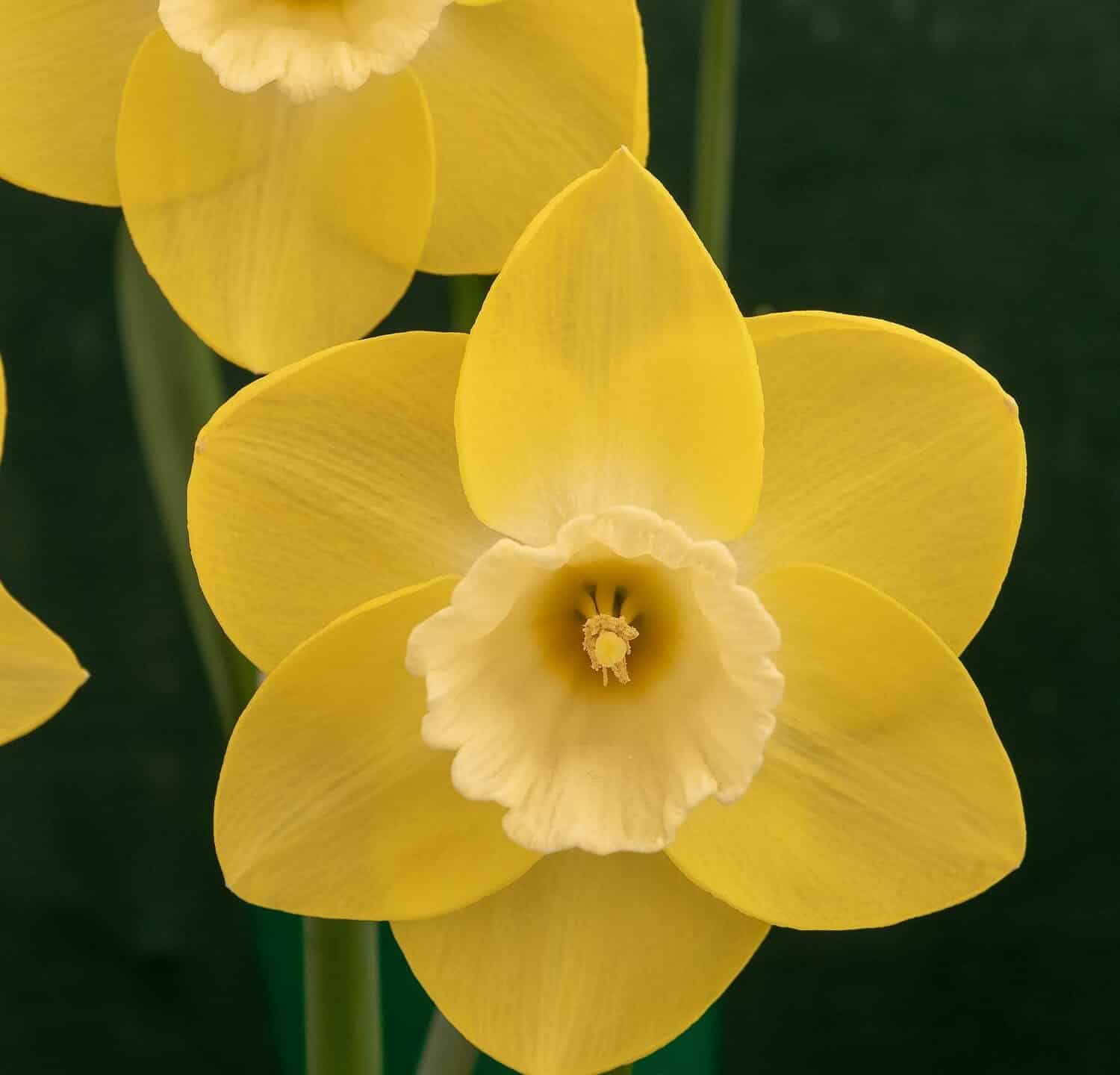
The daffodil is the birth flower for the month of March.
©Joe Kuis/Shutterstock.com
Daffodil blossoms are a lovely and profound representation of faith and protection. These vivid flowers, which are popular throughout the world, have yellow and white hues. They are also symbolic of rebirth and protection.
There are some health advantages to these blooms as well. They have a reputation for being anti-inflammatory in nature and pain-relieving. Daffodils have been used to treat a wide range of illnesses, including headaches and cramps during menstruation.
23. Eucalyptus
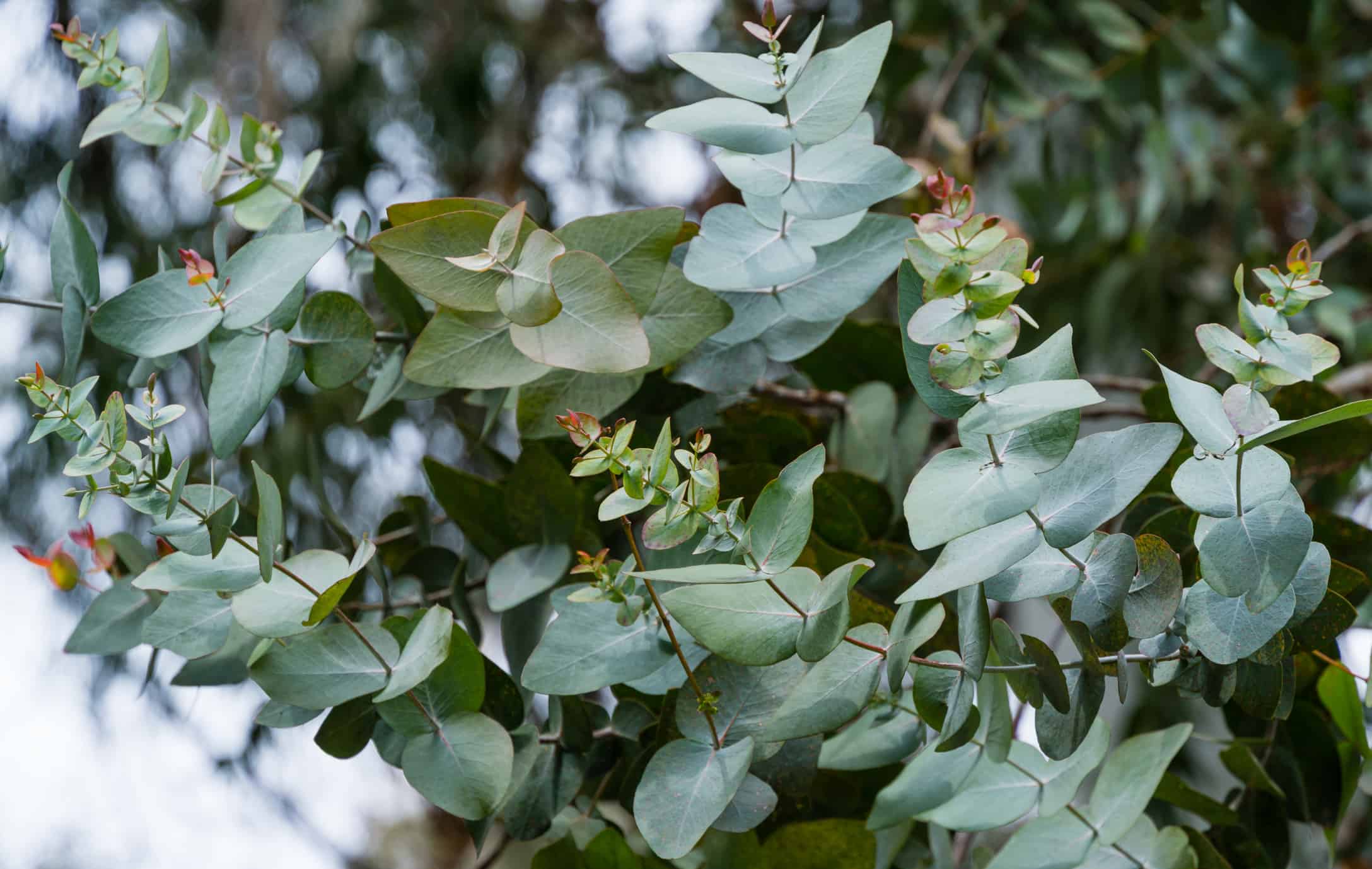
You can buy this plant, roll a rolling pin over the leaves, and hang it in the shower for a fresh scent.
©iStock.com/Marina Denisenko
Did you know eucalyptus plants can have a bright red flower bloom from them? Eucalyptus represents protection in folklore, and mythology, and has a history of being a part of medicine. The leaves of eucalyptus are preferred for religious and therapeutic practices since they are thought to provide protection against sickness and evil spirits in many communities.
In addition to being protective, eucalyptus offers a number of health advantages. Because of its invigorating and revitalizing aroma, the oil is a popular element in aromatherapy.
24. Echinacea

Pollinators such as butterflies adore
Echinaceablooms.
©iStock.com/Jasmina81
Coneflowers, of the Echinacea genus, are known for their vivid violet, pink, and white hues. These flowers represent protection and vitality. Echinacea blooms were thought to bring good fortune in addition to feelings of enthusiasm and well-being across numerous civilizations.
Echinacea flowers are an ingredient in cosmetics and herbal medicines because of their distinctive ingredients. The charming scent of this flower enhances their physical effects and is commonly in fragrances and other similar products.
25. Heather
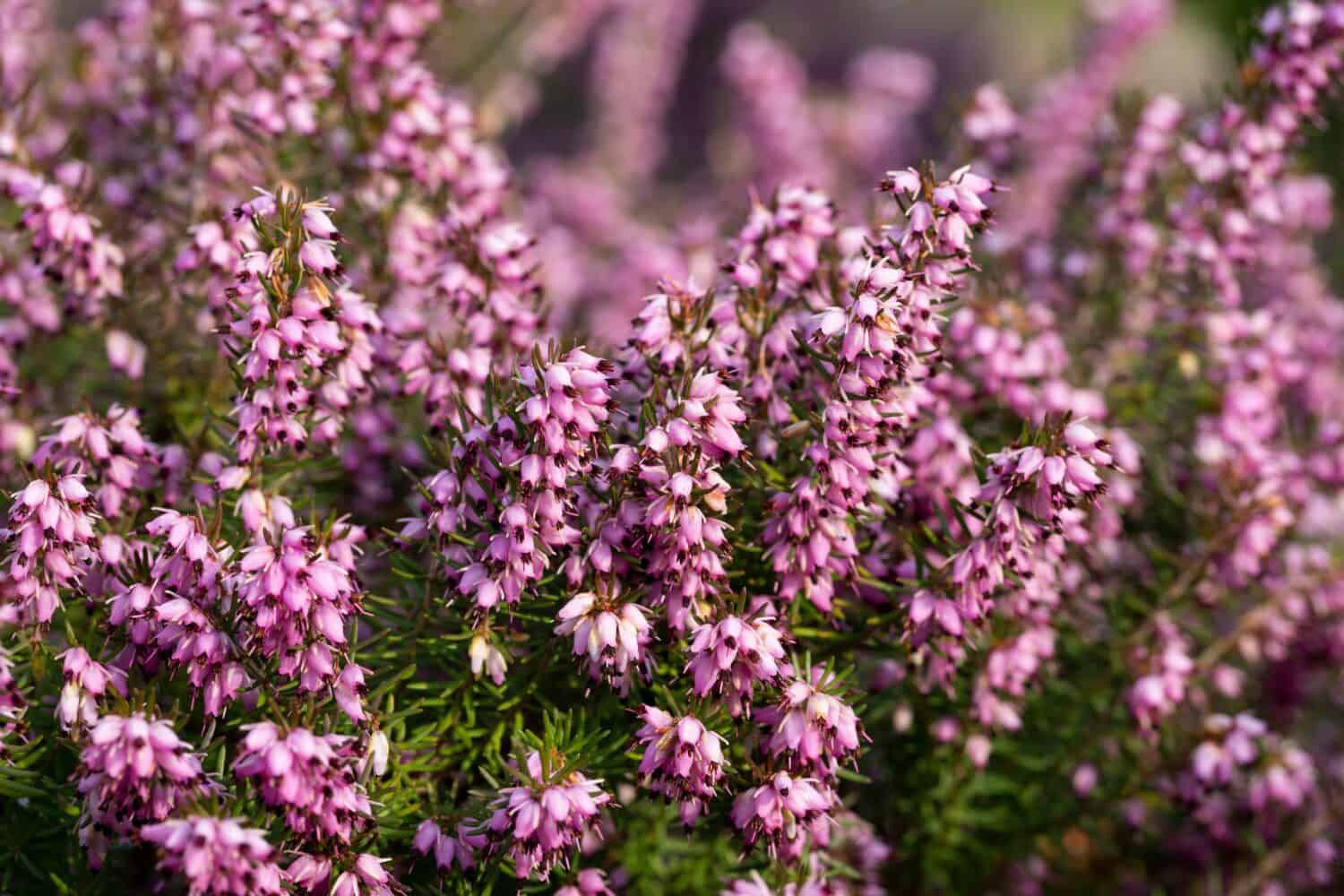
Heather is an evergreen shrub!
©AnnaNel/Shutterstock.com
These blooms are not just unique in shape, heather grows in several stunning colors! As you might presume, it also represents protection. Historically, people have worn heather flowers to fend off evil forces and negative energy.
Heather is popular for its capacity to flourish in arid settings like moorlands and mountain ranges. Because of its resilience and tenacity, it has come to represent protection and durability.
Furthermore, heather is thought to offer safety and ease, which makes it a great option for creating a tranquil and serene atmosphere.
26. Jasmine
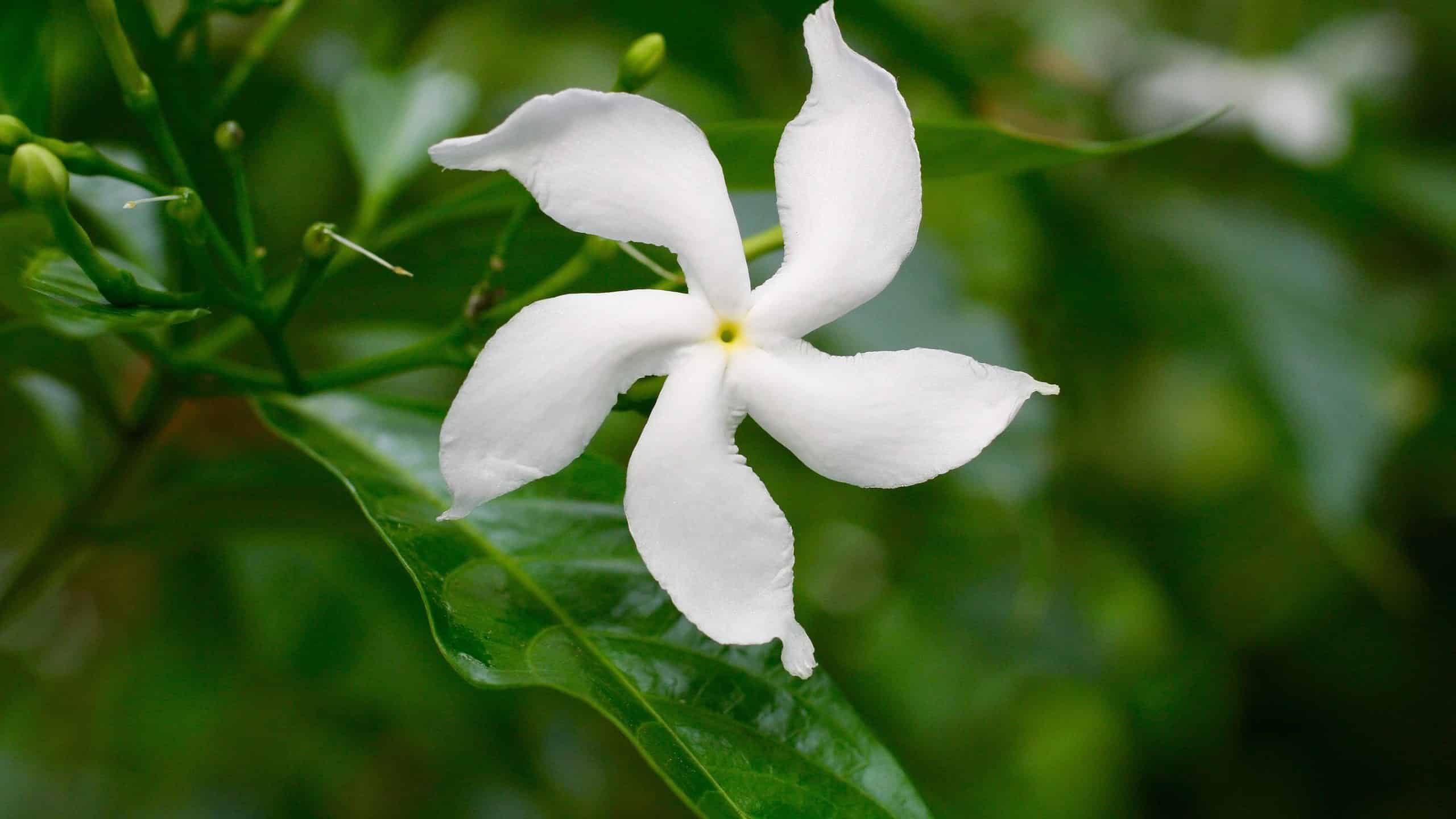
Jasmine technically belongs to the olive family.
©maerzkind/Shutterstock.com
For decades, jasmine flowers have been utilized in traditional medicine and religious services as an emblem of protection. These sweet blossoms are indigenous to tropical and subtropical regions of Asia and are available in hues of white, yellow, and pink.
Because of their protective qualities, jasmine flowers are part of ceremonies and practices to prevent spirits of wickedness and evil forces. In several cultures, jasmine flowers hold great cultural meaning.
Jasmine is a revered flower in Hinduism that is connected to purity and love. It is frequently an aspect of religious rituals. According to conventional Chinese medicine, jasmine extends life and wards off illness.
27. Lavender

Many people use lavender to induce sleep.
©gardendata/ via Getty Images
A well-liked flower with numerous protective properties is lavender. Although it originated in the Mediterranean region, its attractive appearance, scent, and medicinal qualities have led to its widespread cultivation globally.
Lavender’s most popular application is as a protective symbol. Lavender is thought to have protective properties against supernatural forces and negative energies across numerous cultures. It encourages serenity and relaxation, both of which can lessen tension and anxiety.
Its pleasant and calming aroma is frequently an ingredient in lotions, candles, essential oils, and other similar items to encourage tranquility and calm.
Summary of Flowers That Represent Strength
| Rank | Flower |
|---|---|
| 1. | Snapdragon |
| 2. | Mullein |
| 3. | Baptisia |
| 4. | Yarrow |
| 5. | Witch Hazel |
| 6. | Tansy |
| 7. | St. John’s Wort |
| 8. | Astrantia |
| 9. | Heath |
| 10 | Anemone |
| 11. | Malva |
| 12. | Acacia |
| 13. | Aloe Vera |
| 14. | Angelica |
| 15. | Ash |
| 16. | Aster |
| 17. | Calendula |
| 18. | Carnation |
| 19. | Chrysanthemum |
| 20. | Cinquefoil |
| 21. | Comfrey |
| 22. | Daffodil |
| 23. | Eucalyptus |
| 24. | Echinacea |
| 25. | Heather |
| 26. | Jasmine |
| 27. | Lavender |
Thank you for reading! Have some feedback for us? Contact the AZ Animals editorial team.








